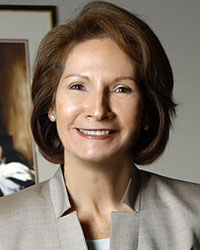2013 International Symposium
Janice Clements, PhD

Janice Clements received her PhD in biochemistry from the University of Maryland. Her postdoctoral training was in neurovirology with Richard T. Johnson, MD, and Bill Narayan, DVM, PhD, in the Department of Neurology at the Johns Hopkins University School of Medicine in Baltimore, Md. During her postdoctoral studies, her work on lentiviruses included studies of the unique structure of visna virus, investigations into the ability of visna virus to infect “non-dividing cells,” and efforts that would lead to cloning the first lentiviral vector. She has led the Retrovirus Laboratory at the Johns Hopkins University School of Medicine since 1992 and became the first vice dean for faculty in 2000.
She was an author on studies that characterized HIV as a lentivirus, and she pioneered molecular pathogenesis studies using the simian immunodeficiency virus (SIV) model. Research in the Retrovirus Laboratory focuses on the molecular virology and pathogenesis of lentivirus infections. SIV is used to examine the molecular basis for the pathogenesis of HIV CNS disease. Her research includes studies of viral molecular genetics, host innate immune responses in the SIV-infected brain, and the role of miRNAs in host responses to viral infection and CNS pathogenesis.
Dr. Clements has made numerous contributions to studies of retrovirus-associated disease. She identified CD4-independent virus entry in the pathogenesis of CNS disease, showing that neurovirulent SIV infects cells in a CD4-independent, CCR5-dependent manner. Dr. Clements and the Retrovirus Laboratory developed an accelerated and consistent SIV macaque model of CNS infection, and demonstrated that replication of SIV in the brain and viral load in the CSF directly correlates with the development of CNS disease. Furthermore, they proved that differential regulation of virus replication in brain and the periphery is due to infection of macrophages in the brain. This SIV model was also used to identify the mechanism of innate immune control of virus in the CNS and miRNA regulation of immune responses in macrophages and brain in the pathogenesis of HIV/SIV CNS disease. An SIV highly active antiretroviral therapy (HAART) model has also been developed to study HIV/SIV latency and the eradication of HIV.
Back to Top